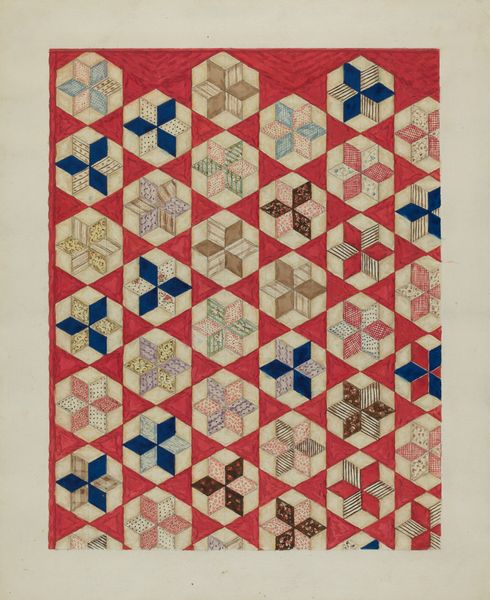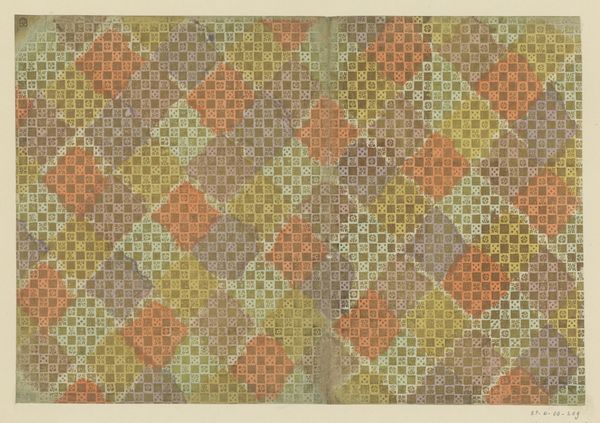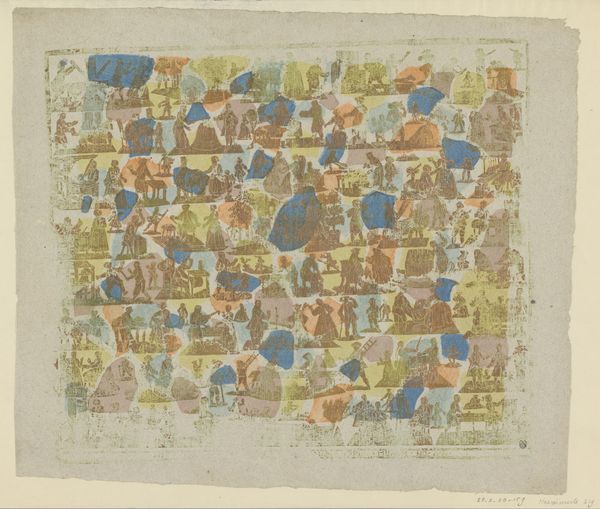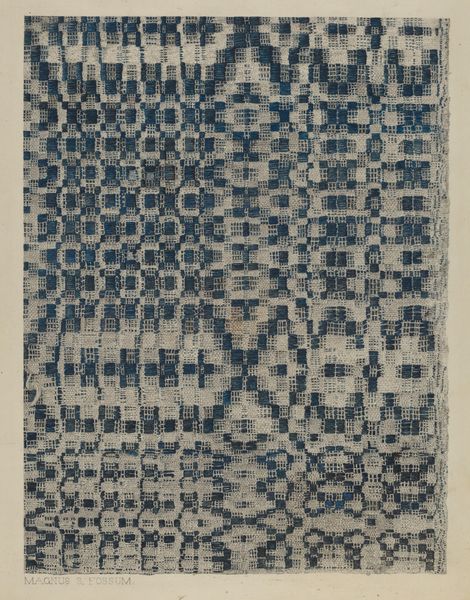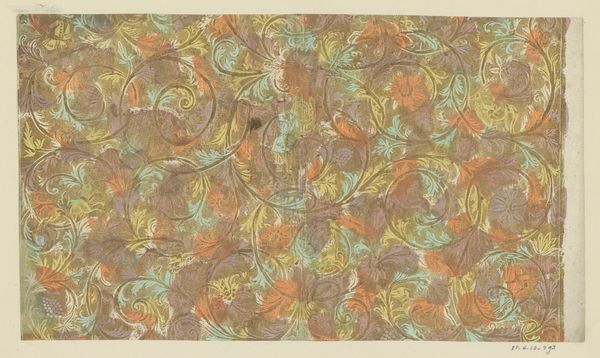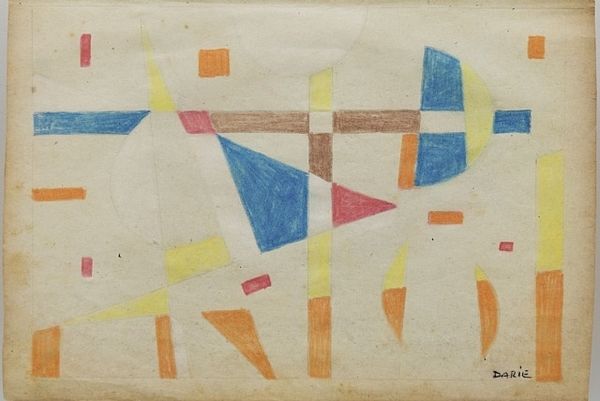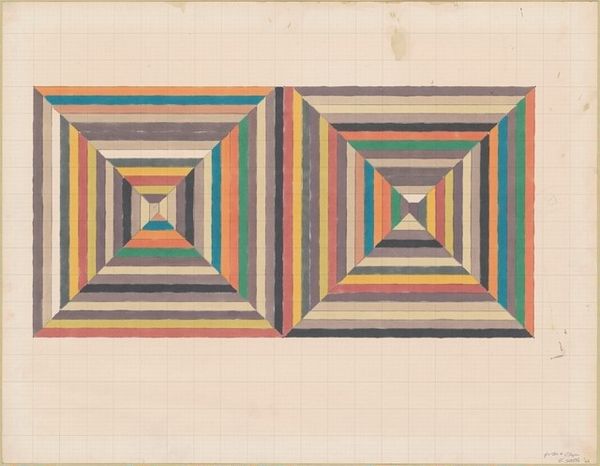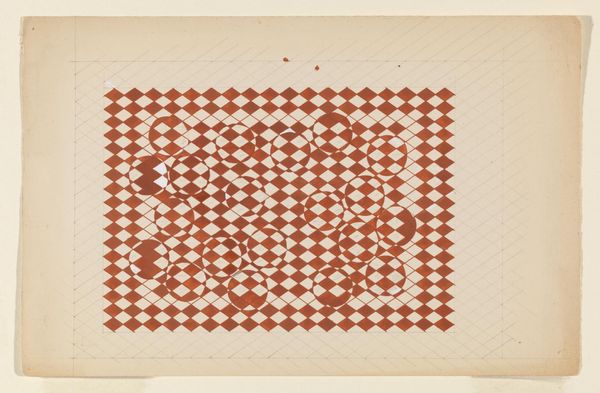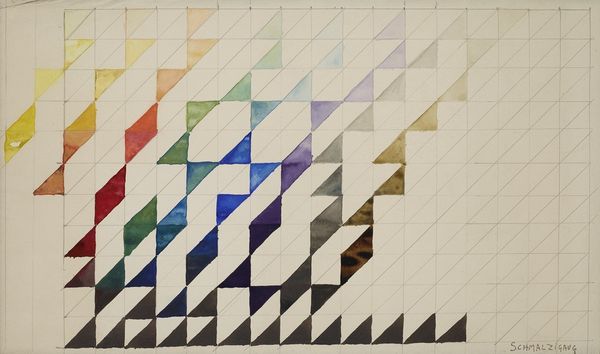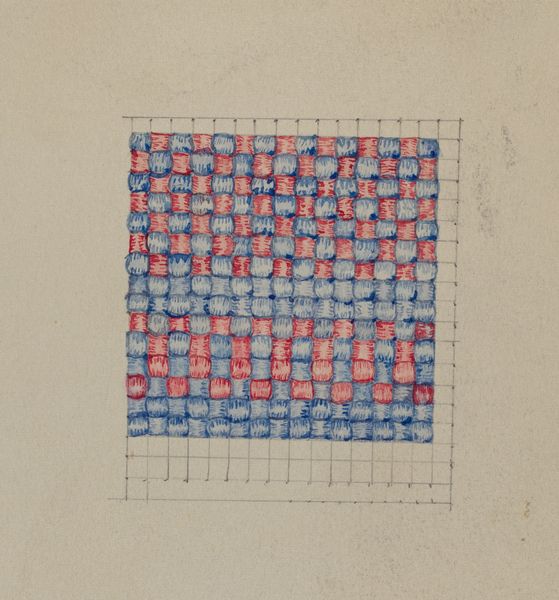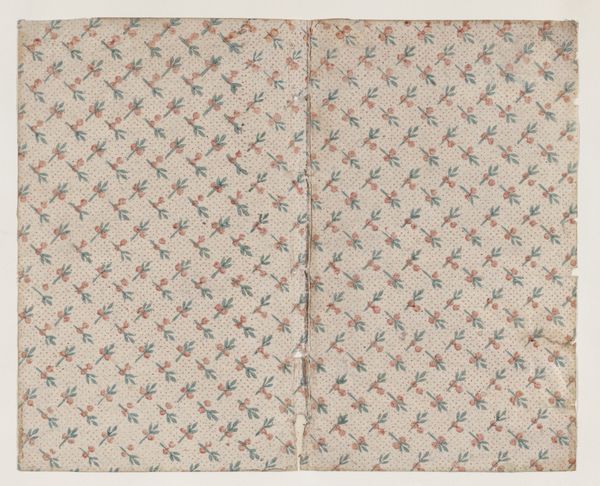
drawing, paper, watercolor
#
drawing
#
paper
#
watercolor
#
geometric
#
abstraction
Dimensions: overall: 28.1 x 35.7 cm (11 1/16 x 14 1/16 in.) Original IAD Object: 181 1/2" long; 71 1/2" wide
Copyright: National Gallery of Art: CC0 1.0
Editor: So, this is Edith Magnette's "Patchwork for Quilt" from around 1937. It's watercolor and drawing on paper, and it presents this incredible geometric design. It almost vibrates, the cubes sort of shimmer. How do you see it? Curator: It's fascinating to see this exploration of material transformation rendered on paper. Think about it: quilting, traditionally "women's work," using scraps of fabric—material salvaged and repurposed, now represented with watercolor and drawing, traditionally “fine art” media, on paper. It blurs those high and low art distinctions, doesn't it? The design itself evokes a kind of planned obsolescence; this beautiful sketch destined to become an item used, worn, eventually discarded. Editor: I hadn’t thought of it like that! It’s interesting to consider the different values associated with the original medium. Is that inherent tension a key part of understanding the piece? Curator: Absolutely. Consider the means of production. Quilting, historically, represented community labor, frugality. By recreating the image as a drawing, with watercolor on paper, are these traditions being elevated or undermined? We should also be questioning whether it was ever realized as a physical quilt or not; what significance does it hold as an unproduced sketch? Editor: I see your point about challenging the "high" versus "low" art distinction. Is she making a statement about labor through the piece itself? Curator: It’s not necessarily a declarative statement, but rather a commentary by repositioning a familiar domestic craft within a fine art context, drawing attention to the value we place—or fail to place—on certain kinds of labor and certain materials. What do you make of the repetition of forms? Editor: Well, that suggests mass production, I guess. Maybe also referencing factory work or textile mills and stuff like that? Curator: Exactly! And what about the individual, handmade aspect, the different fabric designs within the patchwork design, how do these patterns affect the overall material reading? Editor: That's something I will need to look into! I'm really grateful for you helping me understand its complexities a bit better! Curator: Of course! Seeing artwork through a materialist lens really lets us understand the connection to broader socio-economic issues, right?
Comments
No comments
Be the first to comment and join the conversation on the ultimate creative platform.
